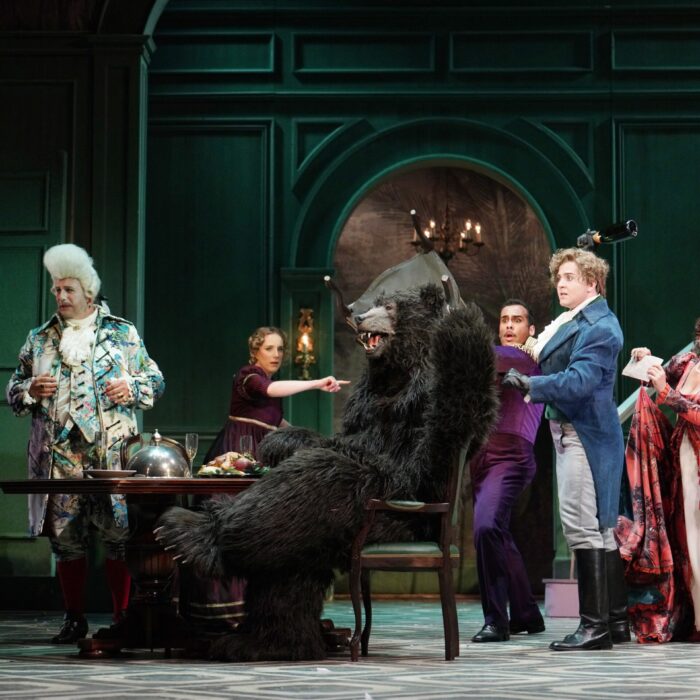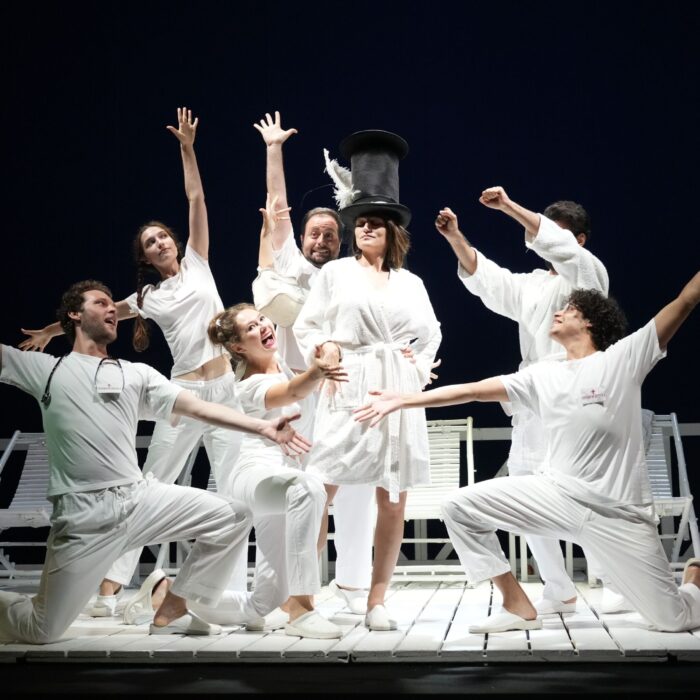
CD Review: Vivaldi’s Pasticcio ‘Argippo’
Another Worthwhile Addition To Naïve’s Vivaldi Edition
By Alan Neilson(Photo: Denis Rouvre)
Naïve’s recent release, “Argippo,” is Volume 64 of its ongoing project to record the entire Vivaldi catalog held by the Italian National Library in Turin. However, unlike the other volumes, this work does not actually form part of the Turin collection.
Initially written in 1730 to a libretto by Domenico Lalli for Vienna’s Theater am Kartner Tor and the Teatro Sporck in Prague, the opera is now lost. This recording of the 2019 Bernardo Tucci Edition uses two recently rediscovered sources, both clearly deriving from the original Prague version: the libretto and a set of arias found in Regensburg in 2008, and an anonymous full score of a three-act opera without a title discovered in Darmstadt in 2011. Both sources have had a significant amount of material added by other composers, including Porpora, Hasse, Galeazzi, Pescetti, Vinci, and Fiorè.
In other words, the “Argippo” represented in this recording is a pasticcio, which Reinhard Strohm, the Vivaldi scholar, suggests was originally compiled for the Venetian impresario Peruzzi in 1732.
Digging Into “Argippo”
Lalli’s libretto, taking advantage of the prevailing fashion for Indian exoticism which existed at the time, set his libretto on the Indian subcontinent during the time of the Mogul Empire. The plot is fairly banal and with the exception of Zanaida, who raves and rages at being betrayed, the characters are not particularly interesting. Rather it is simply a vehicle for an exotic staging, not that the score contains any local coloring.
Moreover, the libretto itself is not well-balanced: even though the main action revolves around The Grand Mogul Tisifaro, his daughter Zanaida, Silvero, who has betrayed her, and whom she believes to be Argippo, it is the relatively passive character of Osira, the wife of Argippo, who receives the most arias: six in total compared to Zanaida’s four, with three each for the other characters.
With so many composers having had a hand in its creation, one could expect it to be equally musically imbalanced. However, it coheres surprisingly well; the styles of the composers certainly differ to varying degrees, but complement each other nicely.
Moreover, Vivaldi’s voice can be heard throughout the work, knitting the piece together with his signature driving violins and pressing rhythms. Fabio Biondi, conducting Europa Galante, also successfully imposes his own personality upon the music, in which the vibrant, crisp, clear, well-balanced sound again helps to provide the work with an integrated feel. Biondi’s reading is also successful in eliciting the inherent refined beauty of many of the arias, as well as capturing their emotional content.
High Standards Maintained
The cast maintains the high standard expected from Naïve’s Vivaldi Edition, which includes one or two new faces, including the Swiss soprano Marie Lys in the role Osira, a role which, with six arias, offered her an excellent opportunity to showcase her talent.
She possesses a fresh, lively and bright soprano with an impressive degree of vocal flexibility, which is wonderfully displayed in her first aria, “Qual disarmata nave.” It is a performance that not only highlights the beauty of the voice but also G.B.Pescetti’s attractive melody, although both could be criticized for a lack of expressive depth.
Far more successful from a dramatic perspective was her presentation of the aria “Un certo non so che” written by Vivaldi, in which she gives voice to the dread which afflicts her senses. Lys successfully accents and colors the words to promote the text, as well as highlighting her torment through a versatile coloratura display, accompanied by the evocative urgency of Vivaldi’s music. A little gem appears towards the end of the disc: the aria, “Vado a morir per te” by S.A.Fiorè from his 1722 version of the opera again shows off the beauty of Lys’ voice, in which her delicate phrasing and gentle embellishments simultaneously capture her love for Argippo and the pain she feels at his forthcoming death.
French contralto Delphine Galou is impressive in the role of Zanaida. Her ability to imbue both recitatives and arias with meaning and emotion is truly formidable with each word and each phrase intelligently crafted.
The opening aria, “Se lento ancora il fulmine” sets out the conflicting emotions Zanaida holds towards her seducer. In the A section she vents her fury against Vivaldi’s racing and insistent strings, her voice full of indignant fury, then immediately calms during the B section as she inflects the voice with reflective sadness before flying back into a rage in the da capo. It is a rollercoaster of a performance that perfectly captures Zanaida’s instability.
It is a theme she returns to in Hasse’s 1729 aria “Che gran pena trafigge il mio core” but this time with greater circumspection. The presentation is refined and elegant, in which she uses her colourful pallet, vocal clarity and delicate accenting of the vocal line to bring out her conflicted emotions. Her fury is once again caught in “Io son rea dell’onor mio” as she demands her father has her and Argippo executed. This time the voice is full of defiance, her rage wonderfully portrayed in unstable vocal lines and her anxious coloratura.
It is Silvero, by impersonating Argippo and then seducing Zanaida, who is responsible for precipitating the drama, yet his arias, by comparison, are fairly insipid affairs. Two are tame reflections on love, with “Se la bella tortorella” having a lame text, although a pleasing melody. The third aria, “Del fallire il rimorso è la pena,” although focusing on the more serious matter of Silvero’s guilt, still fails to fully engage the interest. All are dramatically weak. The contralto Marianna Pizzolato who sings the role, nevertheless, made the most of the material. She possesses an attractive timbre, and her vocal versatility impresses, which she employs skilfully to embellish the vocal line with elegant, intelligent ornamentations.
Argippo is given an excellent interpretation by soprano Emöke Baráth, although there are no actual arias by Vivaldi himself. Her performance of “Anche in mezzo a perigliosa” and “Da più venti combattuta” both arias by A.Galeazzi, written in 1731 and 1732 respectively, were given stirring renditions in which her bright upper register with its piercing top notes is used to good effect, and allowed her to show off her silvery, agile coloratura. Particularly pleasing, however, was her presentation of G.B.Precsetti’s aria from 1729, “Vi sarà stella clemente,” in which Argippo laments the forthcoming death of his wife, Osira, which he himself must kill. Baráth’s presentation was graceful and full of charm, her voice moving smoothly up and down the scale, her mournful tone full of pathos.
Luigi De Donato singing the role of Tisifaro, the Great Mogul, is the only male voice. He possesses a noble-sounding bass with a pleasing timbre, vocal agility, neat phrasing, and clear articulation. Of his three arias, Vivaldi’s “A’ piedi miei svenato” in which Tisfaro confronts Argippo, is the most demanding. De Donato’s forceful phrasing and determined coloratura leaves the listener in no doubt as to his inner pain and strength of purpose.
Musically, “Argippo” has much to offer: it has an attractive score, with a number of beautiful melodies that have an immediacy to delight the ear; it possesses a number of arias which have been well-constructed and successfully develop characterization and/or enhance the drama. Moreover, the composite nature of the work does not overly detract, rather its contrasts add to the enjoyment. Where the work does come up short, however, is in the quality of the libretto which is unbalanced, dramatically weak, and struggles to hold the attention.
Overall, however, this a worthwhile addition to the Vivaldi Edition, and one which will not disappoint Vivaldi enthusiasts.



